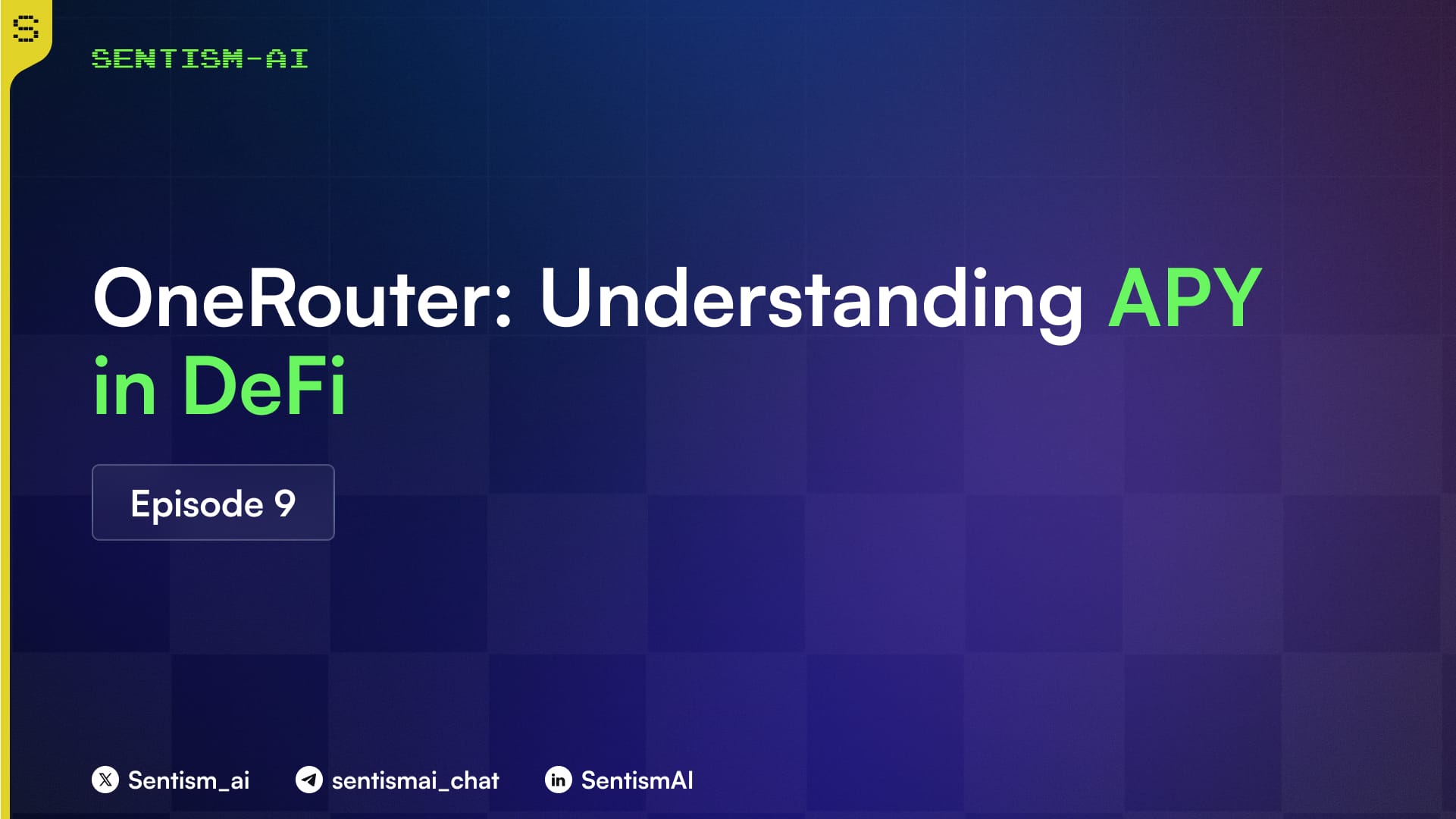Ever wondered what APY really means?

When you scroll through DeFi platforms, you’ll often see vaults or pools offering yields like 10%, 20%, or even 100%+ APY. Sounds exciting - but what does that number actually mean for your money?
Let’s break it down in plain English.
What is APY?
APY (Annual Percentage Yield) is the total percentage you would earn if you kept your money invested for one full year, including compounding.
In simple terms, it shows how much your investment could grow automatically, assuming you reinvest your earnings continuously.
Think of it as your money growing on autopilot - you earn interest not just on your initial amount, but also on the interest you’ve already earned.
A quick example 💡
Let’s say you deposit $1,000 into a vault with a 10% APY.
- If the vault compounds annually, after one year, you’ll have about $1,100.
- But if it compounds daily, your balance grows a little bit each day - and by the end of the year, you’d have around $1,105.
That extra $5 might sound small, but it’s a perfect demonstration of the power of compounding - your profits generating more profits.
Where does APY come from in DeFi?
Unlike traditional savings accounts, where banks earn DeFi yields from multiple on-chain sources.
Some common ones include:
- Staking rewards: You earn tokens for helping secure a blockchain network.
- Lending and borrowing interest: You provide liquidity to borrowers and earn yield from interest payments.
- Yield farming fees: You get a share of trading fees or incentives from liquidity pools.
- Advanced strategies: More complex setups like looping, delta-neutral farming, or liquidity rebalancing - often managed automatically by smart contracts.
Each of these yield sources carries different levels of risk, depending on market conditions, token volatility, and smart contract reliability.
Why higher APY usually means higher risk ⚠️
In DeFi, a 200% APY might look tempting - but it’s rarely “free money.”
Those returns could come from:
- Highly volatile tokens with uncertain price movements
- Short-term liquidity mining incentives that can disappear overnight
- Leverage-based strategies that amplify both gains and losses
That’s why it’s crucial to understand what drives the yield before you invest. Sustainable APYs are typically lower but more consistent, while sky-high ones often come with hidden risks.
How smart vaults help manage the risks
Platforms like OneRouter automate yield optimization - meaning the vaults continuously rebalance and compound across multiple strategies to maximize yield while minimizing risk.
Instead of chasing the next “1000% APY” pool manually, you can rely on smart automation that adjusts positions based on data and market conditions.
You can also check live APYs across different vaults directly on https://onerouter.sentism.ai/ to see how yields shift in real time.
TL;DR
- APY = your total annual return, including compounding
- Compounding makes your earnings grow exponentially
- DeFi APY comes from multiple yield sources, each with unique risks
- Higher APY ≠ is better — always check what drives it
- Smart vaults like OneRouter help you earn automatically, with built-in risk management
So next time you see “100% APY,” you’ll know exactly what it means - and whether it’s worth the risk.

